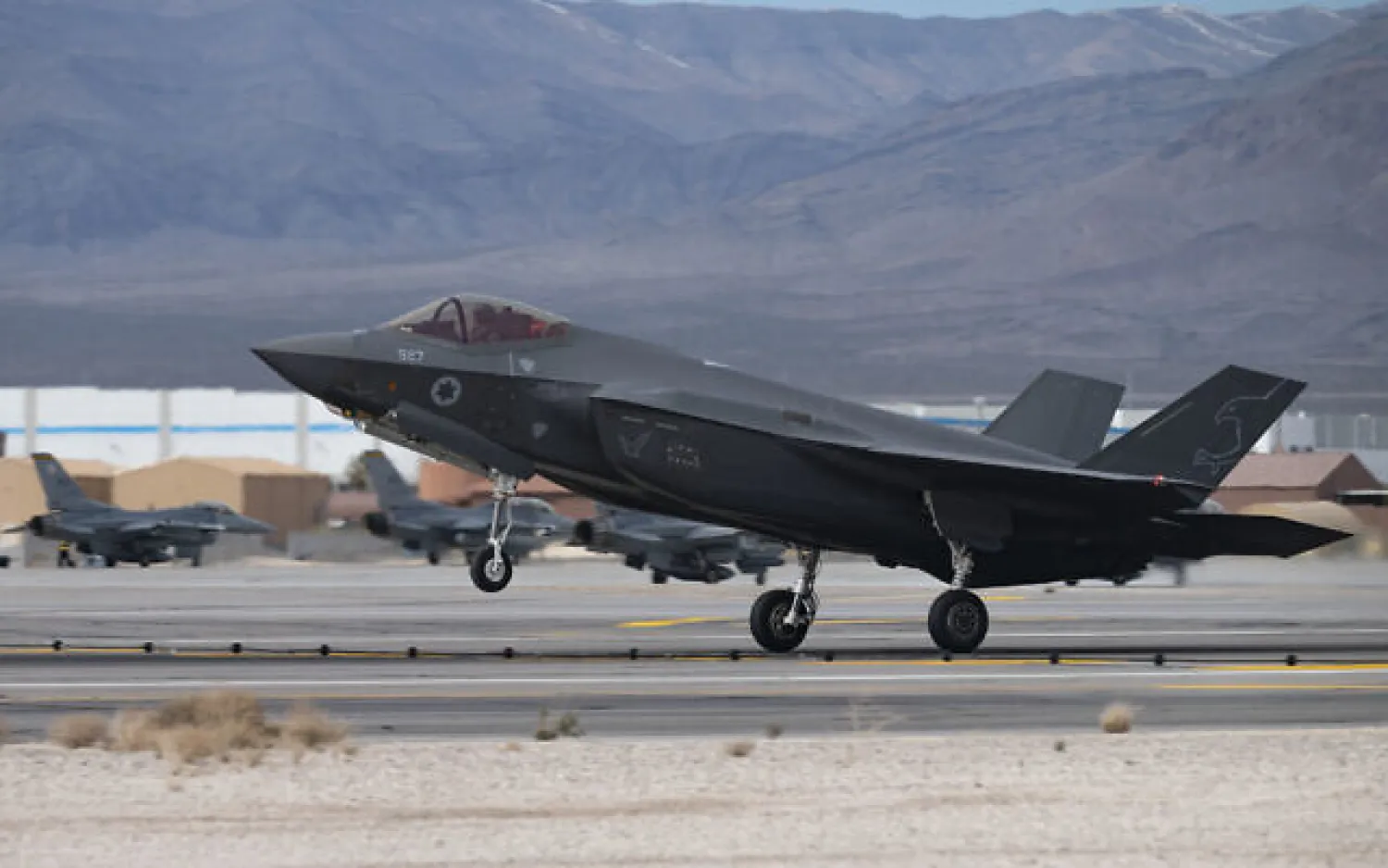The United States and Israel began a two-week air exercise, simulating a “strategic strike” as part of the Red Flag exercises.
Red Flag drills have been held at least three times a year since 1975 at Nellis airbase, considered the US Air Force’s “premier military training area.”
The seven F-35I fighter jets and two Boeing 707 refueling planes of the Israeli Air Force had been arriving at Nellis Air Force Base since Wednesday, ahead of the drill, known as Red Flag 23-2.
According to US officials, the joint exercises aim to carry out long-range flights and simulate strikes in an area unfamiliar with the enemy in activity believed to focus on Iran.
In a statement Sunday, the Israel Forces said the exercises would include a “strategic strike in-depth,” an apparent reference to a potential strike on Iran’s nuclear facilities.
Additionally, the air drills would simulate “achieving aerial superiority in the region, joint aerial strikes, area defense, interception of enemy aircraft, low-altitude flights and striking in an unfamiliar area with an abundance of anti-aircraft defenses.”
During the drill, the Israeli refueler planes were to refuel US fighter jets, and Israeli fighter jets were to refuel from a US Boeing KC-46, of which Israel has ordered four and is expected to receive the first in 2025.
Israel considers the KC-46 aircraft necessary to launch possible significant strikes against targets in Iran, about 2,000 kilometers from Israel and far from the normal flight range of Israeli planes.
Israel regularly conducts various exercises with the US Army, including air force and missile defense drills.
“The Red Flag exercise strengthens operational cooperation between the two militaries as key partners committed to maintaining security in the Middle East,” the Israeli army said Sunday.
In January, the Israeli army and the US Central Command conducted a significant drill in Israel, dubbed Juniper Oak, the largest joint exercise between the Israeli and US militaries.
The drill was widely considered a message to Iran.
The US Navy, Marine Corps, Space Force, and Air National Guard were also to participate in the Red Flag 23-2 drill.
The US Air Force said the exercises aim to “provide aircrews the experience of multiple, intensive air combat sorties in the safety of a training environment.”
“Close to 100 aircraft are scheduled to depart Nellis twice a day and may remain in the air for up to five hours during this large-scale exercise. Also, expect aircraft noise during nighttime and weekend launches,” the US Air Force said.
The US Navy, Marine Corps, Space Force, and Air National Guard were also to participate in the Red Flag 23-2 drill.
One of the drills is only for US forces, another only for the “Five Eyes” intelligence alliance, Australia, Canada, New Zealand, the United Kingdom, and the United States, and one “that welcomes an expanded roster of international allies and partners,” the US Air Force said.
The Israeli army participated in Red Flag in 2002, 2004, 2009, 2015, and 2016.
Nellis Air Force Base is the primary war center for the US Air Force, which coordinates training for combined strike forces that include air and ground units from the US Army, US Navy, US Marines, and aircraft from NATO and allied nations.
As of the end of 2019, the base employs 9,500 military and civilian personnel. The total number of military residents is more than 40,000, including family members and retired military personnel in the region.









